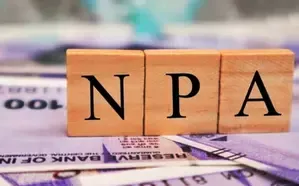Is the Decline in NPAs of Public Sector Banks Really Good News?

Synopsis
Key Takeaways
- NPAs decreased significantly for public sector banks.
- BJP celebrates the reduction as a positive sign.
- Congress criticizes the report, calling it an eyewash.
- Political opinions remain polarized.
- Investors see potential growth as a result of improved financial health.
New Delhi, July 23 (NationPress) The steady decrease in gross non-performing assets (NPAs) for public sector banks (PSBs) over the last five financial years has invigorated both the general public and investors, giving rise to an optimistic economic outlook. However, the political landscape remains polarized.
Several leaders from BJP, Congress, and CPI expressed their perspectives on the Finance Ministry's recent report, noting that NPAs dropped from 9.11 percent in March 2021 to 2.58 percent in March 2025.
The BJP hailed this decline as a positive development, while Congress labeled it as mere eyewash, and the CPI expressed skepticism regarding the results.
Shantanu Thakur, Minister of State for Shipping and Waterways, described this as a major accomplishment, asserting that the nation is progressing under Prime Minister Narendra Modi's leadership.
BJP MP Brij Lal stated, "This is remarkable news for both our country and its citizens. A reduction in NPAs indicates growth in the performing sectors. This is why we are the fourth-largest economy worldwide and are on track to become the third. It’s truly great news for India and all Indians."
Conversely, Congress MP Manish Tewari accused the government of concealing losses, asserting that banks have faced significant challenges that aren’t reflected in the report.
“The government must reveal how many individuals, over the past 9-10 years since the introduction of IBC, took loans and repaid only 4-5 percent, resulting in substantial losses for the banks,” he remarked.
Congress MP Saptagiri Ulaka stated, "These are merely figures. Without diving deeper into the details, we cannot grasp the entire scenario. Numbers alone do not provide comprehensive answers."
CPI MP P Sandosh Kumar told IANS, "If this is accurate, then it's a positive sign, but I cannot comment extensively as I haven't reviewed the report yet. If it's legitimate, it’s a good indication since NPA is a critical issue.”
“The key question is, how did it decrease?" he questioned.






